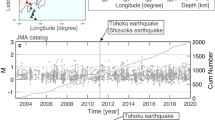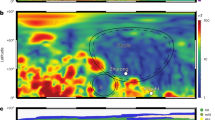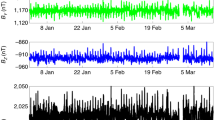Abstract
MOUNT Kenya is a large central volcano just south of the equator in central Kenya. It rises to a height of 5,199 m above sea level. The base of the volcano covers an area of approximately 7,000 sq km, and is roughly circular in plan with an average diameter of 105 km. A detailed geological study1 indicated that some 1,500 m of the upper part of the mountain has been removed by erosion since the volcano was formed in the Plio-Pleistocene.
This is a preview of subscription content, access via your institution
Access options
Subscribe to this journal
Receive 51 print issues and online access
$199.00 per year
only $3.90 per issue
Buy this article
- Purchase on Springer Link
- Instant access to full article PDF
Prices may be subject to local taxes which are calculated during checkout
Similar content being viewed by others
References
Baker, B. H., Rep. geol. Surv. Kenya, 79 (1967).
Emeleus, T. G., and Osborne, D. G., Annl Géophys., 24, 715–718 (1968).
Evernden, J. F., and Curtis, G. H., Curr. Anthropol., 6, 343–384 (1965).
Cox, A., Science, 163, 237–245 (1969).
Author information
Authors and Affiliations
Rights and permissions
About this article
Cite this article
SKINNER, N., BHATT, N. & HASTENRATH, S. Negative magnetic anomaly associated with Mount Kenya. Nature 250, 561–562 (1974). https://doi.org/10.1038/250561a0
Received:
Published:
Issue Date:
DOI: https://doi.org/10.1038/250561a0
Comments
By submitting a comment you agree to abide by our Terms and Community Guidelines. If you find something abusive or that does not comply with our terms or guidelines please flag it as inappropriate.



